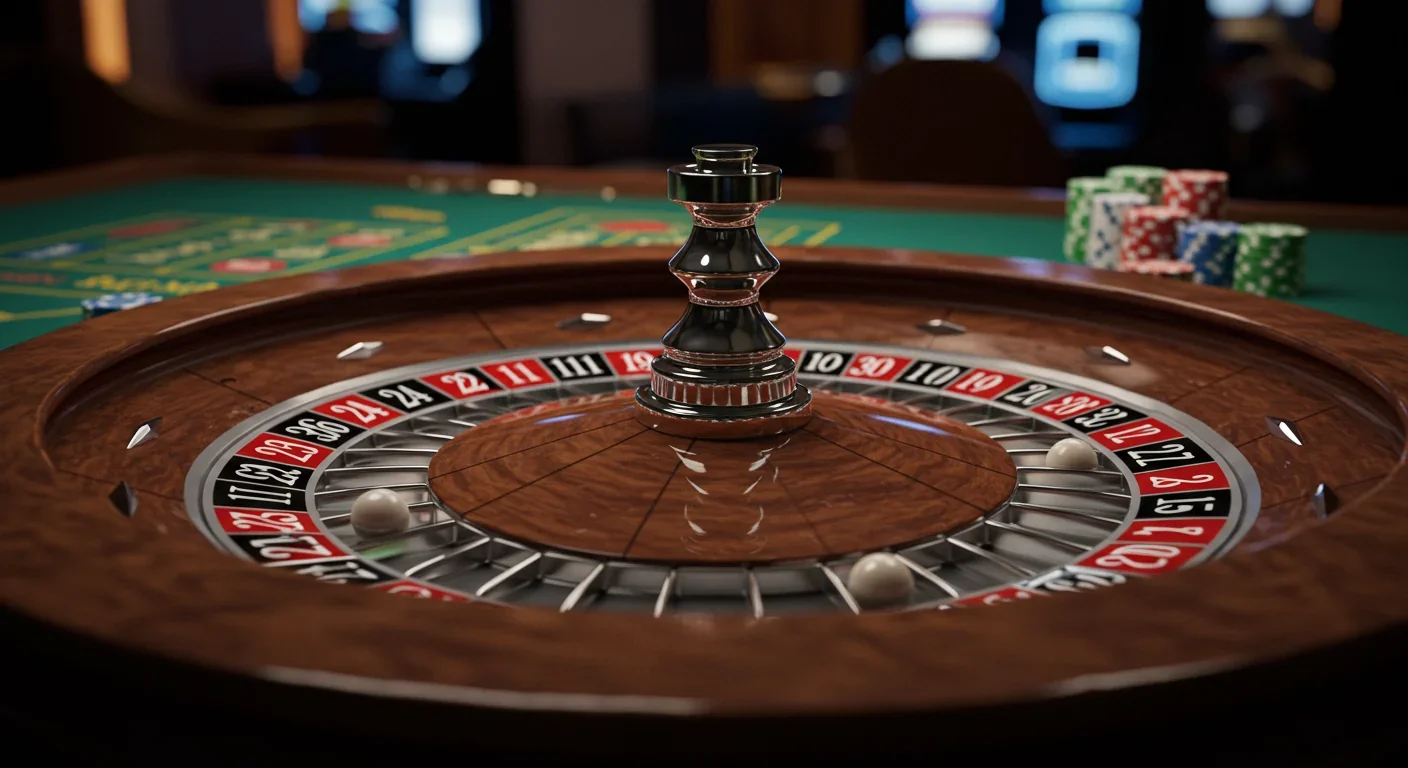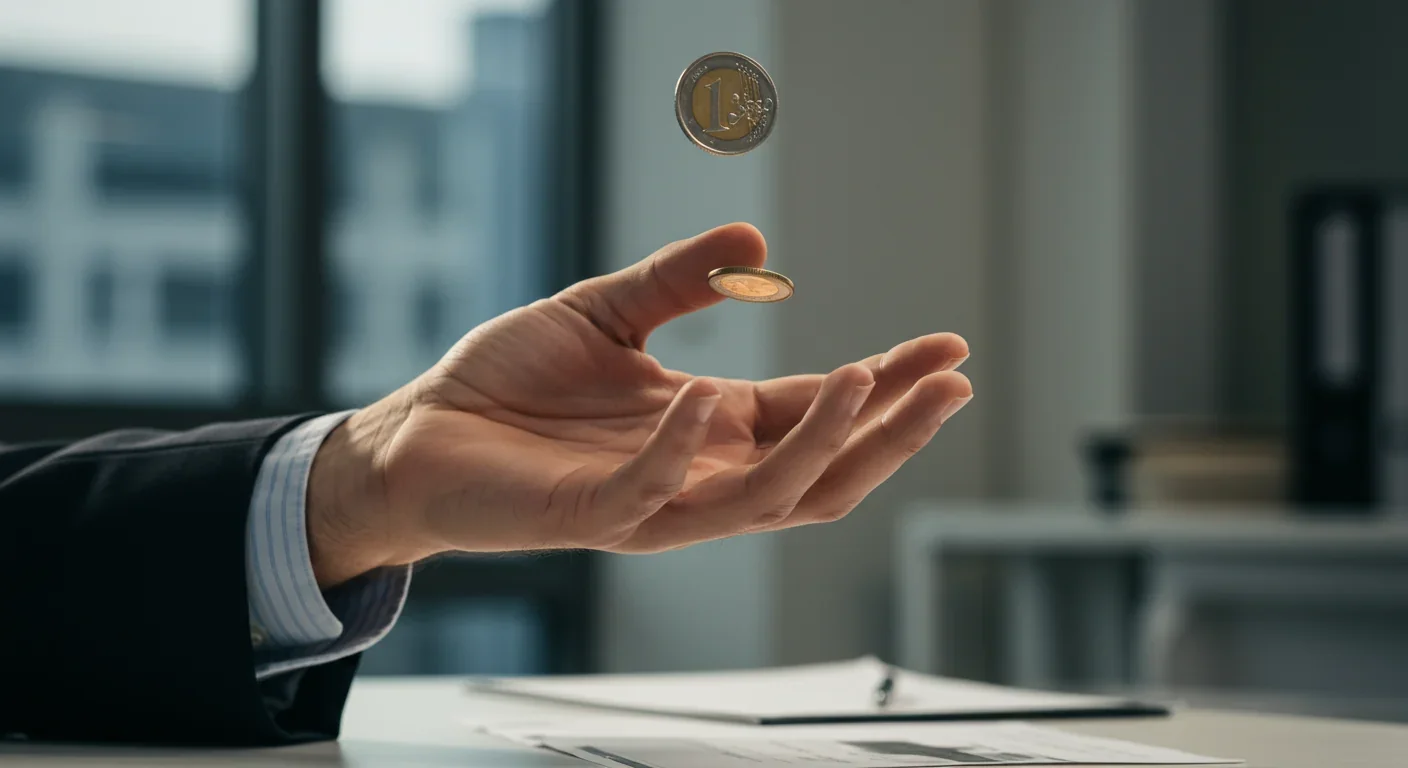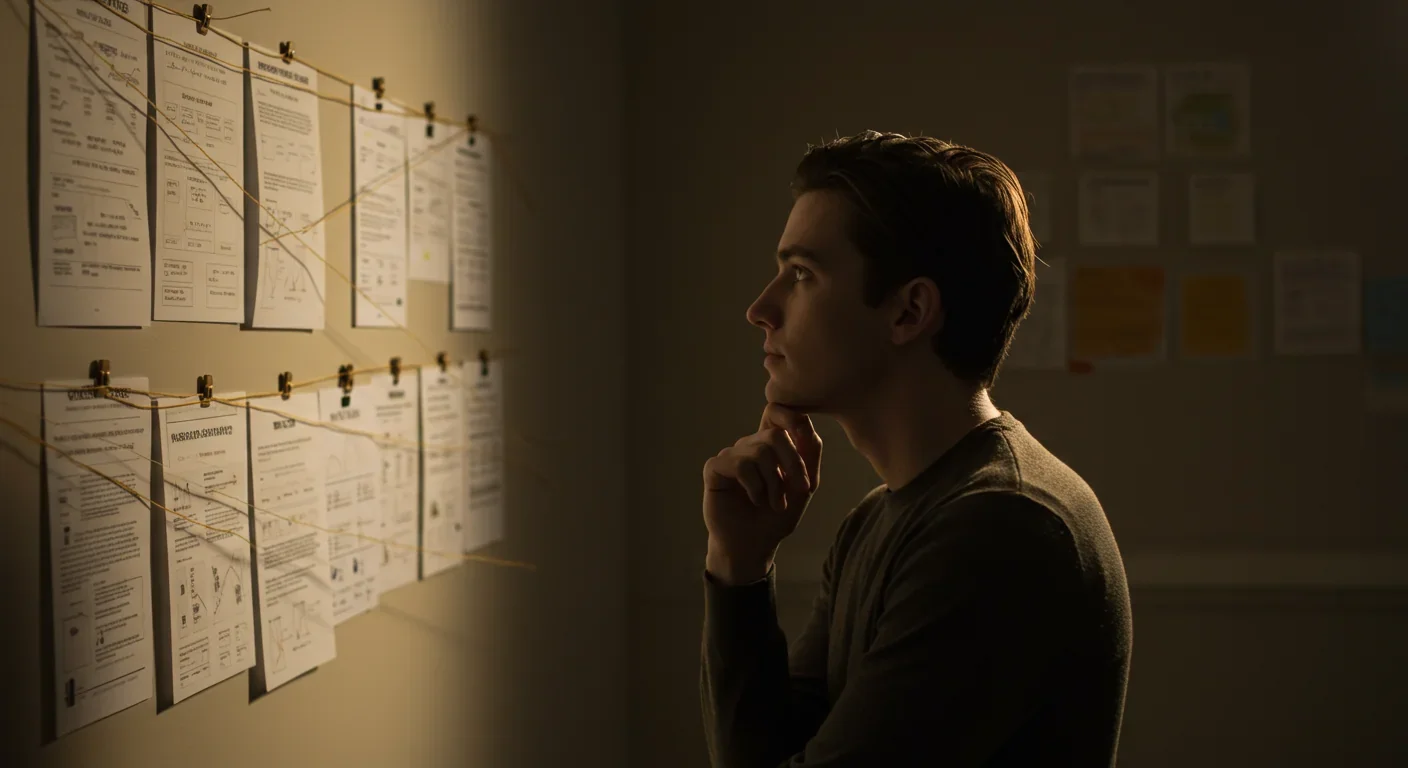Why Evolution Designed Children to Need More Than Two Parents

TL;DR: Our brains are hardwired to see patterns in randomness, causing the gambler's fallacy—the mistaken belief that past random events influence future probabilities. This cognitive bias costs people millions in casinos, investments, and daily decisions.

The roulette ball had landed on black 26 times in a row. Crowds gathered around the table at Monte Carlo Casino in August 1913, betting feverishly on red. After all, red was due, right? The odds had to balance out. By the time the ball finally landed on red on the 27th spin, gamblers had lost millions of francs. They'd fallen victim to one of the most persistent errors in human reasoning—and you probably make the same mistake every day without realizing it.
We call it the gambler's fallacy, but it reaches far beyond casinos. It shapes how we invest, hire employees, diagnose patients, and even choose romantic partners. It's a fundamental glitch in how our brains process probability, and it costs us far more than casino chips.
The gambler's fallacy is deceptively simple: the belief that past random events influence future probabilities. If a coin has landed heads five times in a row, we feel certain tails is coming. If our startup ideas have failed twice, we assume the third must succeed. If we've had bad luck in relationships, surely the next one will work out.
The mathematics couldn't be clearer. Each coin flip is an independent event with exactly 50% odds, regardless of what came before. The coin has no memory. The roulette wheel doesn't know it landed on black 26 times. The universe isn't keeping score.
Yet this knowledge rarely penetrates our gut feelings. Dr. Daniel Kahneman, who won the Nobel Prize for his work on cognitive biases, puts it bluntly: "The gambler's fallacy comes from our brain's struggle to accept true randomness."
The gambler's fallacy is the mistaken belief that independent random events are somehow linked—that a streak of particular outcomes makes the opposite outcome more likely to occur in the near future.
Your brain evolved over millions of years to spot patterns. If rustling grass meant a predator twice before, assuming danger the third time kept your ancestors alive. This pattern-recognition circuitry served us brilliantly in a world where most events were connected.
But casinos and stock markets operate differently than survival on the savanna. Modern probability involves truly independent events—something our ancient brain struggles to process.
Researchers have identified three cognitive mechanisms that fuel the fallacy. First, the representativeness heuristic makes us expect small samples to reflect long-term patterns. If coins land heads and tails equally over 10,000 flips, we wrongly expect the same balance in the next five flips.
Second, we're hardwired to seek order and predictability. Apophenia—seeing meaningful patterns in random data—is so fundamental to human cognition that we find faces in clouds and messages in static. When confronted with a string of identical outcomes, our brains rebel against the chaos. "This has to mean something," we insist.

Third, emotional states amplify the error. Hope whispers that our luck is about to turn. Frustration demands that we're due for a win. Studies of pathological gamblers using fMRI scans reveal that their brains show distorted activation patterns in regions associated with reward anticipation and probability assessment.
The result? We create narrative arcs where none exist. We transform random sequences into stories with beginnings, middles, and inevitable conclusions.
Understanding the mathematics of independence reveals why the fallacy is so dangerous. When events are truly independent, the probability of each outcome remains constant. A fair coin always has a 50% chance of heads, whether you flip it once or a million times.
This is fundamentally different from the law of large numbers, which people frequently misunderstand. Yes, over an enormous number of flips, the ratio of heads to tails will approach 50-50. But this doesn't mean the universe actively corrects imbalances. There's no cosmic force pushing toward equilibrium in the next flip.
Consider a more concrete example from probability theory. If you flip a fair coin twice, there are four equally likely outcomes: HH, HT, TH, TT. After the first flip shows heads, only two outcomes remain possible: HH or HT. The second flip still has a 50% chance of either result. The first outcome didn't "use up" any heads quota.
"The gambler's fallacy comes from our brain's struggle to accept true randomness."
— Dr. Daniel Kahneman, Nobel Prize Winner
The multiplication rule for independent events makes this mathematical: P(A and B) = P(A) × P(B). The probability of getting heads five times in a row is indeed rare: 0.5 × 0.5 × 0.5 × 0.5 × 0.5 = 0.03125, or about 3%. But once you've already gotten four heads, you're no longer calculating the probability of five heads from the start. You're asking: given four heads have occurred, what's the probability of the fifth flip? And that answer is simply 0.5.
The 1913 Monte Carlo incident wasn't an isolated case. The gambling industry's entire business model relies partly on players misunderstanding independence.
Modern casinos exploit the fallacy through careful design choices. Electronic displays show recent roulette outcomes, encouraging pattern-seeking. Slot machines are programmed to create "near-miss" experiences. Table layouts present betting options that feel strategic but remain purely chance-based.
The consequences extend far beyond entertainment. A 2019 study of agricultural producers found that those who experienced good harvests one year were less likely to expect positive results the following year—as if good fortune created a debt to be repaid. Their risk assessments and planting decisions suffered accordingly.

Financial markets reveal the fallacy's most expensive manifestations. During the 2008 financial crisis, countless investors committed the classic error: believing that because markets had fallen dramatically, a rebound was imminent. They doubled down on losing positions, convinced that probability would "balance" their losses into gains.
Investment analysts warn that this thinking ignores a crucial difference. Unlike coin flips, market movements aren't independent events. Today's price reflects yesterday's news, investor sentiment, and economic conditions. A falling stock doesn't become more likely to rise simply because it's been falling. In fact, negative momentum can indicate worsening fundamentals that justify further declines.
Ironically, the gambler's fallacy has an equally dangerous twin. The hot hand fallacy is the opposite error: believing that a winning streak will continue.
If you've won three poker hands in a row, the hot hand fallacy whispers that you're "on fire" and should bet aggressively. Research originally suggested this was purely illusion. Basketball players with several consecutive baskets aren't actually more likely to make the next shot.
But recent reanalysis of the data reveals something more subtle. In skill-based activities, hot streaks might exist—not because probability favors them, but because performance involves complex factors like confidence, focus, and physical state. A basketball player feeling confident might genuinely play better.
The key distinction: in purely random events like roulette or coin flips, neither fallacy holds. Past outcomes carry zero predictive power. In skill-influenced outcomes, psychological factors can create genuine—if modest—hot hand effects.
You might think that understanding the gambler's fallacy makes you immune. Research suggests otherwise.
A Yale School of Management study found that even students trained in probability and statistics demonstrated the fallacy in decision-making experiments. Knowledge of the bias isn't enough. The intuitive pull toward pattern-completion feels more compelling than abstract mathematical knowledge.
Part of the problem is confirmation bias. When we predict that a losing streak will end and it does, we remember our "insight." When it doesn't, we rationalize that we just needed to wait one more round. Our selective memory reinforces the false pattern.

"The gambler's fallacy can trap people in cycles of loss, especially in disorders like gambling addiction."
— Dr. Mark Griffiths, Psychologist
Dr. Mark Griffiths, a psychologist specializing in gambling behavior, notes: "The gambler's fallacy can trap people in cycles of loss, especially in disorders like gambling addiction." For those struggling with problem gambling, the fallacy becomes a justification for chasing losses. "I've lost so much already, I'm definitely due for a win."
Perhaps the trickiest aspect of the gambler's fallacy is its superficial resemblance to a genuine statistical phenomenon: regression to the mean.
Regression to the mean states that extreme values tend to be followed by values closer to the average. A basketball player who scores 50 points in one game will likely score closer to their average in the next game. A student who aces a difficult test might score lower on the next one.
This sounds like exactly what the gambler's fallacy predicts—so what's the difference?
The key is the underlying mechanism. Regression to the mean occurs because extreme performances usually involve a combination of skill and unusually good luck. The skill remains consistent, but the luck component varies. On average, subsequent attempts will feature more average luck, pulling the result toward the mean.
This doesn't apply to truly independent random events. A coin that lands heads ten times in a row didn't have "good luck" or "extreme performance." It was just random chance, and the next flip is equally random.
Reddit discussions among statistics students regularly grapple with this distinction. The confusion is understandable—both involve means and long-run tendencies. But regression requires a mix of skill and chance, while the gambler's fallacy misapplies the concept to pure chance.
You don't need to visit a casino to fall victim. The gambler's fallacy infiltrates decisions across life domains.
Hiring decisions: After hiring three candidates who didn't work out, managers often feel the next candidate is "due" to be great. But if your selection process is flawed, candidate quality won't magically improve.

Medical diagnoses: Doctors reviewing patient cases can fall into the trap. After seeing several patients without a rare condition, they may become more likely to diagnose it in the next patient—as if disease distribution must balance out hour by hour.
Dating and relationships: After several failed relationships, people convince themselves the next one will succeed "because I'm due." But if you're selecting partners using the same flawed criteria or haven't addressed personal issues, the probability doesn't magically shift in your favor.
Sports betting: Sports bettors frequently believe that a team on a losing streak is due for a win. While team performance isn't purely random, this reasoning ignores actual factors like injuries, morale, and opponent strength.
Investing: After a stock has risen for several days, investors may avoid buying it, thinking a decline is due. Conversely, they might buy falling stocks, believing a rebound is inevitable. Both can be costly mistakes if they ignore fundamental analysis.
The gambler's fallacy isn't limited to casinos. It affects hiring decisions, medical diagnoses, relationship choices, sports betting, and investment strategies—costing people money and opportunities across every domain of life.
So how do you override millions of years of evolution pushing you toward pattern recognition?
Awareness is necessary but insufficient. Simply knowing about the bias helps—some research suggests that awareness can reduce susceptibility. But don't rely on knowledge alone.
Mindfulness practices offer a surprising defense. Dr. Jon Kabat-Zinn argues: "Staying present helps you see choices clearly, not through the lens of past losses." Mindfulness training can help you notice the emotional pull toward fallacious reasoning and create space for more rational analysis.
Seek external systems and rules. Professional investors use systematic strategies that remove emotional decision-making. They buy or sell based on predetermined criteria, not gut feelings about what's "due."
Understand the actual probabilities. Before making decisions involving chance, calculate the real odds. Write them down. A coin flip is 50-50 for the thousandth time. That stock has no cosmic obligation to rebound. Seeing the numbers can override intuition.
Track your predictions. Start logging when you think something is "due" to happen and whether it does. You'll find your intuition about randomness is far worse than you imagine.
For gambling specifically: Set strict loss limits and stick to them. Use self-exclusion tools if needed. Remember that the house edge means you're expected to lose over time—no amount of waiting for your "due" win will change the mathematics.
Cognitive-Behavioral Therapy (CBT) has proven effective for those whose fallacy-driven thinking causes serious problems. Therapists can help challenge the distorted thought patterns and develop healthier approaches to uncertainty.
Here's what's most fascinating about the gambler's fallacy: it's a bug that exists precisely because of a feature. Our pattern-recognition abilities gave us language, science, agriculture, and civilization. The same cognitive machinery that lets us predict seasons, understand cause-and-effect, and learn from experience also tricks us into seeing patterns in randomness.
We're caught in an evolutionary mismatch. The adaptive traits that served our ancestors brilliantly misfire in modern contexts involving pure chance. Evolution didn't prepare us for roulette wheels, stock markets, or clinical trials—domains where events can be genuinely independent.
Behavioral economists document dozens of cognitive biases, but the gambler's fallacy stands out for its universality. It crosses cultures, education levels, and age groups. Even researchers who study probability professionally aren't immune.
This suggests the solution isn't simply better education. We need better systems—decision-making frameworks that work with our cognitive limitations rather than expecting us to overcome them through willpower alone.
Imagine a world where we truly internalized the independence of random events. Investment bubbles would deflate as people stopped chasing trends. Casinos would struggle as players recognized the futility. Hiring processes would focus on candidate quality rather than feelings about being "due" for a good hire.
We're not there yet. But awareness is growing. Online gambling sites now include educational content about cognitive biases. Investment platforms provide reminders about emotional decision-making. Medical schools teach future doctors to recognize how biases affect diagnosis.
The gambler's fallacy will never disappear entirely—it's too deeply embedded in how our brains process information. But we can build guardrails. We can create decision-making environments that nudge us toward rationality. We can develop the meta-cognitive skill of noticing when that feeling of "I'm due" arises and pausing to question it.
That roulette ball that landed on black 26 times taught an expensive lesson. Each spin was independent. The universe kept no ledger of debts owed to desperate gamblers. The only certainty was this: the house edge meant the casino would profit regardless of what players believed about balance and fairness.
More than a century later, those same psychological forces are still costing people money, opportunities, and sound judgment. The mathematics hasn't changed. The human brain hasn't evolved. But understanding the gap between the two—that's the first step toward making better decisions in a world that refuses to balance out just because we think it should.

Lunar mass drivers—electromagnetic catapults that launch cargo from the Moon without fuel—could slash space transportation costs from thousands to under $100 per kilogram. This technology would enable affordable space construction, fuel depots, and deep space missions using lunar materials, potentially operational by the 2040s.

Ancient microorganisms called archaea inhabit your gut and perform unique metabolic functions that bacteria cannot, including methane production that enhances nutrient extraction. These primordial partners may influence longevity and offer new therapeutic targets.

CAES stores excess renewable energy by compressing air in underground caverns, then releases it through turbines during peak demand. New advanced adiabatic systems achieve 70%+ efficiency, making this decades-old technology suddenly competitive for long-duration grid storage.

Human children evolved to be raised by multiple caregivers—grandparents, siblings, and community members—not just two parents. Research shows alloparenting reduces parental burnout, improves child development, and is the biological norm across cultures.

Soft corals have weaponized their symbiotic algae to produce potent chemical defenses, creating compounds with revolutionary pharmaceutical potential while reshaping our understanding of marine ecosystems facing climate change.

Generation Z is the first cohort to come of age amid a polycrisis - interconnected global failures spanning climate, economy, democracy, and health. This cascading reality is fundamentally reshaping how young people think, plan their lives, and organize for change.

Zero-trust security eliminates implicit network trust by requiring continuous verification of every access request. Organizations are rapidly adopting this architecture to address cloud computing, remote work, and sophisticated threats that rendered perimeter defenses obsolete.